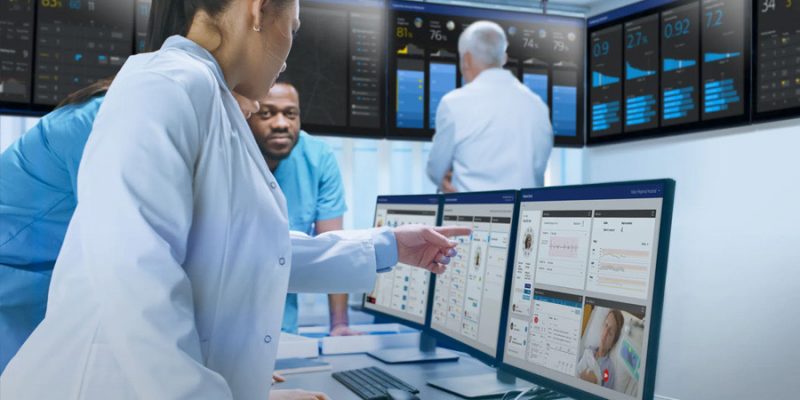
Predictive Patient Data is supporting all of the changes to the healthcare sector as a result of the pandemic.
How can we get above the cacophony of beeping monitors and the constant flow of data each patient creates in a given instant to assure optimal treatment, especially for critically sick patients, while the healthcare industry undergoes significant changes in the aftermath of the pandemic? Why not use data to create a path through the noise rather than adding a new beep or muzzling the already present ones?
The way to Predictive Data
Data has been at the center of nearly every advancement in healthcare, with no end in sight. Patients in critical care settings produce the largest collections, generating thousands of data points that healthcare professionals must analyze to make decisions in real time. Where do you start and how do you keep track of all the disconnected technology producing crucial data that influences patient care decisions? The current independent medical equipment and hospital IT systems are not clinically intelligent enough to collect all patient data from a single source. This suggests that critical prognostic data is being lost before it reaches doctors. For medical professionals and technology to successfully work together on shared analytics, predictive data is crucial.
Although clinical decision support (CDS) systems have been around since the 1980s, their use took off in the mid-2010s with the advent of electronic health records (EHR). These technologies facilitate quicker information storage and processing for doctors, which enhances clinical judgment at the bedside. Clinicians always struggle with time and data due to the endless number of data points a patient might provide every minute. A CDS can bring about change to address this problem.
Monitoring of Patients in the ICU
The present problem with advances in healthcare technology is the great lack of interoperability together with the difficulty and slowness of evaluating pertinent patient data. ICUs, for instance, provide treatment for a hospital’s sickest and frequently most difficult patients. Understanding each patient’s condition, how they are progressing, and if the present medications and interventions are effective is vital for all members of the care team.
Without consistent data, decision-making can be mistake-prone due to the vast volume of information generated by a single patient, much alone a whole ICU. Combining current monitor data with old test results or EHR data won’t result in a more efficient solution. When crucial information is shown across several locations and on various devices, usually just displaying a snapshot in time, it is confusing and consumes needless staff time that should be focused on directly caring for patients. Given the strain on resources caused by the pandemic, it is clear that a consolidation of the numerous data points, complete patient condition dashboards, and prolonged patient care periods are the solutions to our problems.
It is challenging for a physician to determine the possible causes of a medical event due to the lack of flow between devices. A bad medical event might have a patient’s life-altering effects after it occurs. Due to the daily exodus of healthcare workers and the fact that more than half of nurses are considering retirement, this is more crucial than ever. Why not put in place solutions that allow personnel to concentrate on the circumstances that require them the most rather than having them run after sirens and the 90% of false alarm sounds from one patient room to the next?
Clinicians can recognize small changes in patient circumstances that can suggest a need for an intervention to prevent a negative medical occurrence by using risk indices. These indices, which include FDA-approved risk indices, are powered by machine learning and model-based algorithms and give clinicians tailored insights so they may concentrate on the pertinent patient data that is most important to the situation at hand.
This is but one example of noise (acoustics) in the healthcare industry. High background noise levels in the wards might make it difficult to communicate, skip alarms, and get the full restorative effects of sleep. While employees, patients, and medical equipment may be the source of the noise, it may also emanate from ventilation systems or outside road noise. Confidentiality can frequently present issues at reception desks or in counseling rooms as well. Buildings with poor architectural design may feature public spaces that reverberate or echo, as well as walls or doors that don’t offer enough privacy. The problem of noise has received significant public attention. The focus is only going to grow as people become more aware of the possible health dangers of noise.
Can the noise problem be resolved while also enhancing the patient experience?
For the design and administration of both new and existing sites, the DH Estates Health Technical Memorandum 08-01 outlines acoustic guidelines that may be used at various points during the whole building’s lifetime. Initiatives like Shhh (Silent Hospitals Help Healing), which encourages employees to take responsibility for the noise levels in their wards, have also been launched in the US and this nation. However, at a time of limited resources, treating issues ineffectively is seldom the best course of action. Instead, it is crucial to concentrate limited resources on high-priority areas that may make the most difference. The specific needs of each Trust Estate, hospital, healthcare facility, or care facility should first be determined. A staff-led controlled approach could be the best option, but if the building has structural issues, this might not work.



















